
Save this storySave this storySave this storySave this storyYou’re reading the Food Scene newsletter, Helen Rosner’s guide to what, where, and how to eat. Sign up to receive it in your in-box.
When in doubt, turn to food: at least when it comes to gift giving, that’s an infallible motto. For every person on this earth, there exists a perfect gastronomic gift—something to eat, something to eat with, something to eat near, something to remind one of the joy of eating. For every aesthete who will only be pleased by a hand-forged, sculptural exploding fruit bowl (approximately $613; four weeks’ lead time required) or leather boots sculpted to resemble a half-peeled banana ($1,903, on sale!), there’s the happy soul whose heart desires nothing so much as a jar of violently purple French mustard ($12), or a tube of pickle-flavored toothpaste ($13). These are some of the items I’ve found myself drawn to this year, a motley collection of the edible, the functional, and the absurd. I hope that at least one or two can spark some inspiration this season. (If not, try one of my previous years’ guides.)
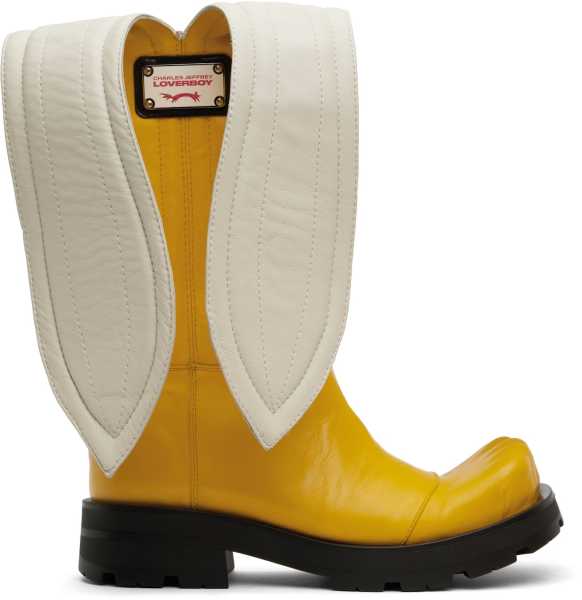
Charles Jeffrey Loverboy Yellow Banana Boots.Photograph from SSENCEWhen you make a purchase using a link on this page, we may receive a commission. Thank you for supporting The New Yorker.
A Serving Platter That Gets Out of the Way
Instead of a haphazard pile on top of the cabinets or ragged library-style shelving in a forgotten closet, why do we not simply hang our vessels on the wall? This shapely, ingenious wooden tray ($75) is fabricated in Brooklyn from fine-grained, lustrous sapele-mahogany wood, and has two simple holes at one end, perfectly sized to slot onto the tines of a custom-made, U-shaped metal wall hook (included)—art, storage, and function in one.
Consider Some Lobsters
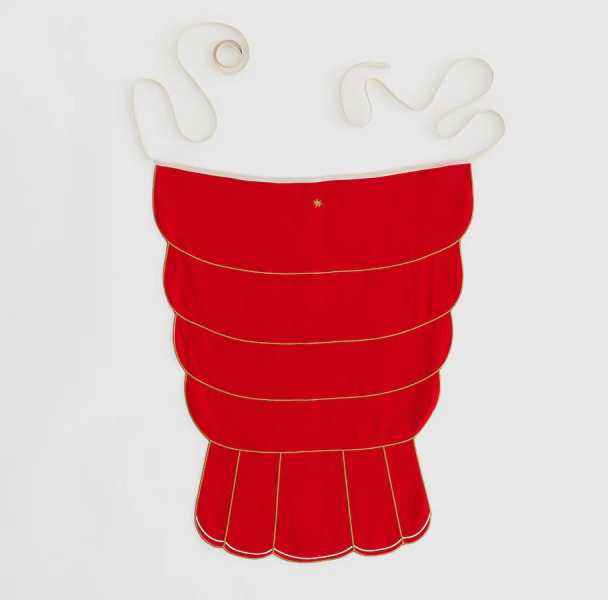
Maison Balzac Lobster Apron.Photograph from Maison Balzac
Have we, as a culture, reached peak shrimp? No, never—we will never reach peak shrimp. (For the shrimp aficionado on your list: the artist Betty Turbo’s gloriously cartoony papier-mâché shellfish, $40.) But perhaps a little love is due to their larger crustacean cousins, whose red shells connote, paradoxically, both the silver-platter opulence of yesteryear and a salt-swept, puritanical stoicism. Perhaps a linen lobster-tail apron ($76, from Maison Balzac), ideal to tie on for serving cocktails—a Martini or a G. & T., certainly, pre-batched and poured from an outrageous blown-glass lobster decanter ($695 at Neiman Marcus), with the garnishing olive or citrus skewered on a teak lobster pick ($20 for four), and a die-cut lobster-shaped paper cocktail napkin ($8.25 for sixteen), just in case. (Clip a Jenny Lemons lobster barrette—$16—in the hair, just in case the message isn’t clear.) The star of the show, of course, is the lobster itself, shipped live ($439.99 for a box of twelve) and ready to be dispatched in service of dinner. Once steamed, present them in a kingly pile with some skinny-nosed vintage Portuguese lobster crackers (about $35), reminiscent of surgical tools in a pleasingly disquieting way, and salty drawn butter individually portioned in the ceramicist Jono Pandolfi’s austerely lovely, amazingly useful little ceramic condiment bowls ($13.60 each, on sale). Keep the kids occupied with a D.I.Y. paper-lobster kit ($25), hypnotically beautiful and made from iridescent paper, while littler ones can run around with a pull-along wooden lobster (about $29), ingeniously constructed so the claws click-click-click (playfully? Ominously? Truly, who can know the mind of a lobster!).
Something Fancy Stored in a Jar: Savory
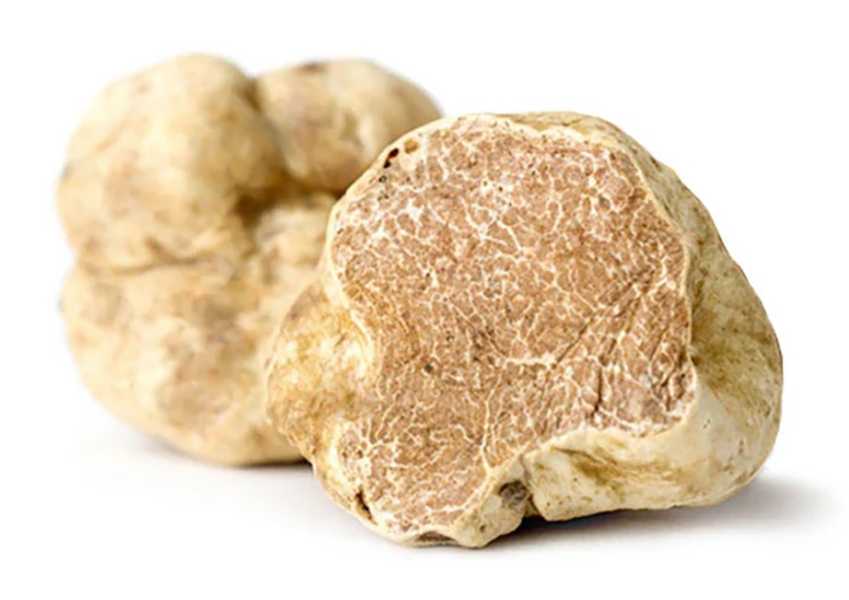
Fresh white truffles.Photograph from Alma Gourmet
Unlike black truffles, which both smell and taste savory and earthy, the vaunted white truffle—more expensive, more rare, in all ways more absurd—tastes like nothing at all. It’s all smell: a fecund, earthy clean-sweat smell, bizarre and irresistible. Like a Zen koan made material, the truffle itself (starting at $124.95 for a half-ounce) emits its alchemical aroma whether we’re around to inhale it or not; this phenomenon can be captured, quite elegantly, by storing the truffle in a glass jar (Le Parfait’s hinged-lid, quart-size canning jars—$49.99 for four—are awfully elegant) and burying it in a mass of uncooked white rice, which will become infused with the intoxicating scent in the course of a day or so. Choose an excellent Italian short-grain variety, like Carnaroli ($10.25 for 17.6 ounces) to make a swoony truffled risotto. You can then repack the truffle in new rice once or twice more before it’s time to actually shave up the bumpy little fungus, as paper-thin as possible, over something like scrambled eggs or a plate of pasta with butter. This is an especially efficient gift if you have a lot of people to provide presents with at once, and a large budget. For your less-favored friends, simply swap in a knobbly little potato. If they express dismay, hey, you never know with truffles. Must have been a dud.
Something Fancy Stored in a Jar: Sweet
Like a white truffle, the slender, squiggly vanilla bean also happily infuses its scent into whatever you surround it with. For an ultra-simple gift (and, if you’ve waited until the last minute, one you can source from the grocery store), put two or three vanilla beans in an airtight container and cover them with white sugar. I’m enthralled by Diaspora Co.’s Kaveri vanilla, ($26 for 0.4 ounces, about three vanilla beans), sourced from Kerala, India; it’s lush and figgy, and comes in a beautiful metal tin that’s ready to be filled with whatever sugar you have on hand. For a spicier, more woody profile, try vanilla from Timor-Leste ($17.50 for an ounce, about seven beans); pack them in a retro-style glass jar adorned with minimalist tulips ($24). The aroma is slow to infuse—your recipient will want to wait a month or more for the roundest, deepest results—but what emerges is a vanilla sugar of sensuous, joyous complexity, ready to be sprinkled on a cookie, stirred into coffee, or exuberantly baked with, and entirely worth the wait.
Time and Temperature

Magnetic Everybody Kitchen Timer.Photograph from I Am & CO
Some categories of kitchen equipment are often overlooked but can make all the difference between good and glorious. A thermometer, essential in some instances, is useful always. The Thermapen (from $76.30), made by ThermoWorks, is the gold standard of meat thermometers, and with good reason: it’s compact, easy to use, and so instant-reading that it seems to know the interior temperature of a steak before you’ve even breached the crust. A serious baker, griller, or smoker will appreciate a probe-based alarm thermometer ($24.75, again by ThermoWorks, which really dominates the field here) which informs you, via helpful high-pitched beeping, when a target temperature has been reached. It’s good for slow-cooked meats, and for confirming the ambient temperature in an oven or a smoking rig. Those who deal with hot liquids—your deep fryers, your candymakers—will appreciate a sturdy analog thermometer such as OXO’s ($20.95), no bells and no whistles, just clear glass and clear data. A kitchen timer remains an invaluable tool, despite the built-in timer functionality in most ovens, microwaves, and cellular devices. There’s something about the engineered physicality of setting a twist timer, the cricket-on-speed ticktock as it winds its way around to the moment of ding! You can leave your phone in the other room. You can accidentally reset the oven clock. You will never mistake the hammered bell for anything other than the pointed alert it promises to be. I like Dusen Dusen’s graphic striped timer ($48), for visual as well as auditory punch, and the submarine-instrument utilitarianism of Frieling’s retro-inspired model ($24.95). But you cannot beat a kitchen timer printed with the face of the actor Andrew Garfield ($20)—a goofy tie-in with his recent weepy, cooking-filled movie “We Live in Time.” The device is aptly titled the We Live in Kitchen Timer. It’s simply the best kitchen timer I’ve ever seen.
A Decanter, Simply Lovely
Gifts from The New Yorker
Shop tote bags, hats, dog toys, and more in our store.
A decanter—for wine, for spirits, for tap water, for whatever—is one of those little nonnecessities that we’re unlikely ever to buy for ourselves. Still, they make anything poured into them feel a little nicer, a little more touched by intention and elegance and wit. There’s one for every personality: a dark and moody bottle, in unexpected shades of blue, from CB2 ($39, on sale); a handcrafted glass fish, balanced on its tail ($85); an organic-form speckled vessel, with a gracefully narrow neck, made from recycled glass ($78); a marigold-orange bottle from Il Buco Vita ($160), which even when empty is full of sunlight.
Blow Up Your Table
The era of squiggles is over; a new day of fluffy and inflated dinnerware dawns. Those glossy, brightly colored balloon-edged plates you’ve seen everywhere are by Gustaf Westman ($58 each); I actually think the cup and saucer ($75) are chicer and a little more unexpected. West Elm’s take on the trend ($88 for four) neatly cuts a cliff-straight edge into the cylindrical rim, making a shallow bowl perfect for pasta. Haand’s winsome ceramic rice bowls ($175 for four) seem sliced from a sphere, with sides protruding like a little belly. The ethereally blobby hand-blown tripod dessert plate ($220) from Sticky glass elevates your slice of pie on three lemony-pearly glops; a kinetic drinking glass ($125), made by the artist Cedric Mitchell, rolls around on a bubbly, gold-flecked orb. The designer Lola Mayeras’s weird and fun puffy plate ($80) has a form so tumescent it barely feels like a plate at all. A similarly voluminous platter from the Mexican ceramics source Hermoso Cariño ($100) has subtly indented edges, evoking a flower; in glossy black, it’s both soft and a little vicious.
An Ounce of Prevention . . .
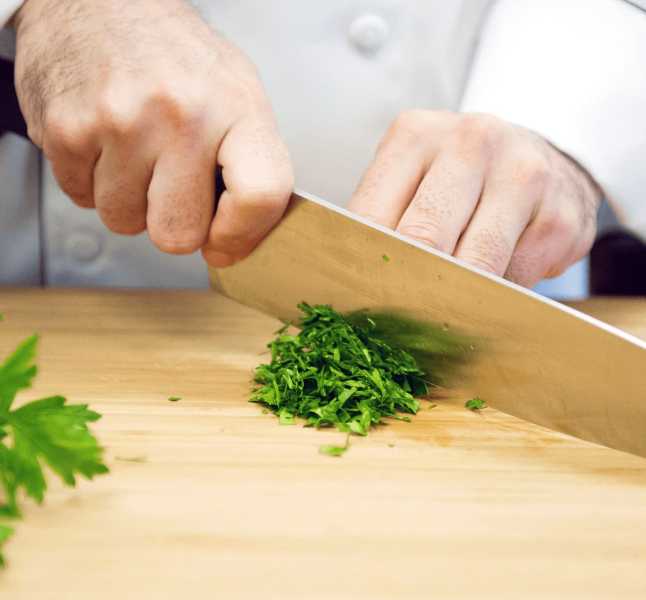
The Institute of Culinary Education offers a basic knife-skills class.Photograph from Institute of Culinary Education
Adult bibs, linen, trimmed with lace, from Gohar World ($138 for two), to protect against spills and splashes. A knife-skills class ($150 for a three-hour in-person lesson at the Institute of Culinary Education in New York City), to protect against slips and slashes.
. . . and a Pound of Cure
For spills, the truly miraculous Miss Mouth’s Messy Eater Spray ($9.99 for four ounces). For slips, Bernal Cutlery’s brilliant little first-aid kit for kitchen wounds ($26), a tidy metal tin cleverly packed with everything you need for an encounter with a wayward chef’s knife, including bandages, finger cots, sanitizer, antiseptic, a soothing salve, a tiny bottle of the Chinese herbal hemostatic agent yunnan baiyao, and a bit of fancy chocolate, first aid for the wounded ego.
Chestnuts, Roasting, You Know the Drill
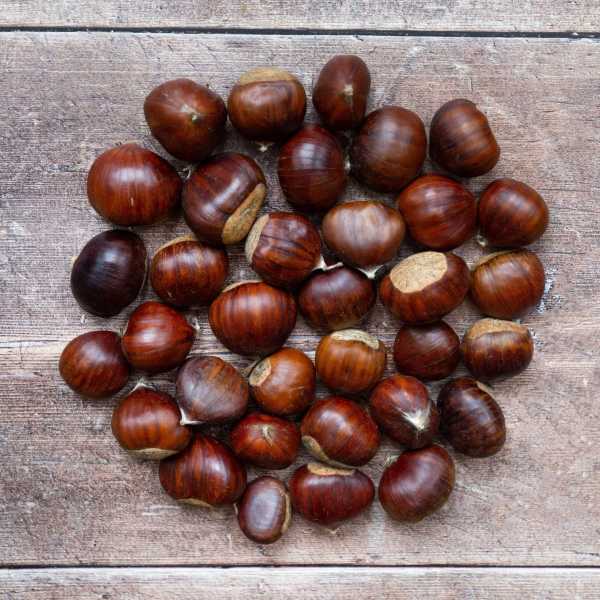
Fresh chestnuts.Photograph from Frog Hollow Farm
A little on-the-nose for a Christmas gift, maybe, but there is something magical about freshly roasted chestnuts: the round, woody smell that fills the air as they cook; the hot-potato juggling act of trying to eat them fresh from the oven; their creamy, mellow flavor, all silk and perfume. They couldn’t be easier to make at home: Score an X on their rounded sides, soak them in cold water for an hour—this makes for easy peeling—then roast in a 425-degree oven until the skin starts to split and peel at the score marks, about 25 minutes. You can find fresh chestnuts at most any grocery store this time of year, but you can level up the experience with Chinese chestnuts (larger and sweeter than the European variety) fresh from the orchard of Ox Heights Farm, in Michigan ($35 for two and a half pounds), as smooth and rich as butter. While you’re at it, get ahead for next year’s holidays with a chestnut tree sapling ($34.95 each, but you’ll want to get two: a pair planted near each other leads to better pollination, and thus more bountiful harvests).
A Drink and Something to Drink It Out Of
As I have mentioned before, an ideal holiday gift is a bottle of something lovely plus a lovely vessel from which to consume it. This year, skip the small-batch scotch or whisky; something feels right, right now, about cordials and liqueurs—high-alcohol spirits that are sweetened with fruit, and sometimes splashed with vinegar or spice. They’re often used sparingly as ingredients in complex cocktails, but there’s something ineffably cool about sipping a cordial straight-up, from a tiny glass. Try a bottle of La Tomato ($19.95, though quite a bit more with shipping), from the Japanese distillery Godo Shusei Co, an ice-clear concoction made with fresh tomato juice; its vegetal sweetness will sing when poured into spindly, garden-green cordial glasses from Ferm Living ($69 for four). Or, for the maximalist, gift a stately bottle of Italicus ($44.96), a revival of a centuries-old recipe: it’s an herbaceous drink built on a base on bergamot (the aromatic citrus fruit that gives Earl Grey tea its zing) and rounded out with notes of lime zest and lavender. The golden liquid takes on a moody green glow in its blue-tinted Art Deco beauty of a bottle—an effect that’s replicated, delightfully, when the liquid is served in Noon and Moon’s hand-blown rainbow-hued glasses ($186 for six), which can be used right-side up or upside-down.
Pantry Pleasures
This year’s seasoning: The Magic Spice ($16), from the L.A. restaurant Botanica, is a fine-textured blend of green garlic, coriander, and Persian lime that’s transcendent when used on eggs and veggies. This year’s tinned fish: A two-pack ($14), one each of fat sardines and luscious anchovies, from the French fish house La Bonne Mer, both prepared “à la pecheur”—in the style of sardines—for instructive, delicious comparison. This year’s olive oil: Nabali ($36 for five hundred milliliters), from Canaan Palestine, fruity and slick, evocative of hot weather and ideal for drizzling. This year’s hot sauce: Onima ($14 for five ounces) is a Barcelonan burner, with a sweet, puckery base of sherry vinegar. This year’s candy: Tamalitoz is a line of chile-filled hard candies inspired by the Mexican snack of fresh fruit dusted with Tajin seasoning; the tamarind flavor ($3.99 for a four-ounce bag) is an explosive blend of sweet, savory, and spicy.
Perhaps You Would Like to Poach a Whole Fish
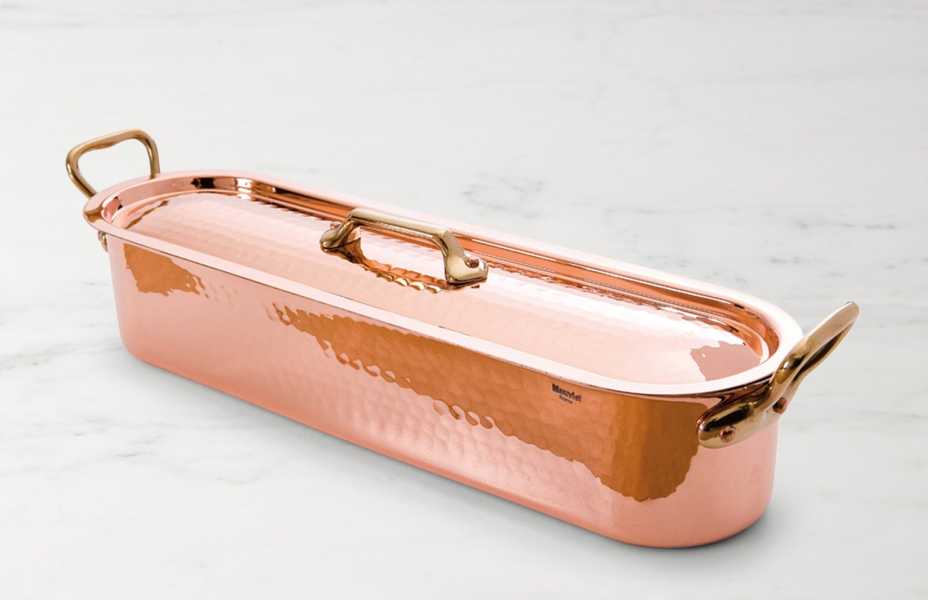
Mauviel Copper Fish Poacher with Rack.Photograph from Mauviel 1830 Cookware
This is something for the big-splashy-meal cook in your life—the king of the standing rib roast, the empress of the whole pig on a spit, the generalissimo of the hundred-person clam bake. Such a person might already have a home smoker or a back-yard birria pit, but perhaps you can allow her the quiet drama of a whole poached fish. This is a dish of focus, of delicacy, of trusting the steadiness of one’s hand and the quality of one’s ingredients rather than the spectacle of a huge hunk of something cooked over live fire. The technique is pretty simple: slip a whole fish into a pan of gently simmering court bouillon (or another flavorful liquid), and let it cook just until silken, like sous vide without the intermediating fiddle-faddle of a bag or an immersion circulator. Honestly, you could poach a fish in any kind of vessel, but a traditional French-style fish poacher is one of the more thrilling vessels in a culinary arsenal—as long and skinny as the creatures for which it serves as a hot tub, inset with a helpful little perforated grille for removing the fragile creature once it’s perfectly cooked. If the hammered-copper Mauviel model ($1,595) is the Rolls-Royce of the fish-poacher world, the aerodynamically ovoid Alessi interpretation of the form ($1,470) is the Ferrari. For the rest of us, a more reasonable stainless-steel version ($60.93) serves just as nicely, though you’ll have to make up some of the theatrics on your own.
Inedible Doppelgangers
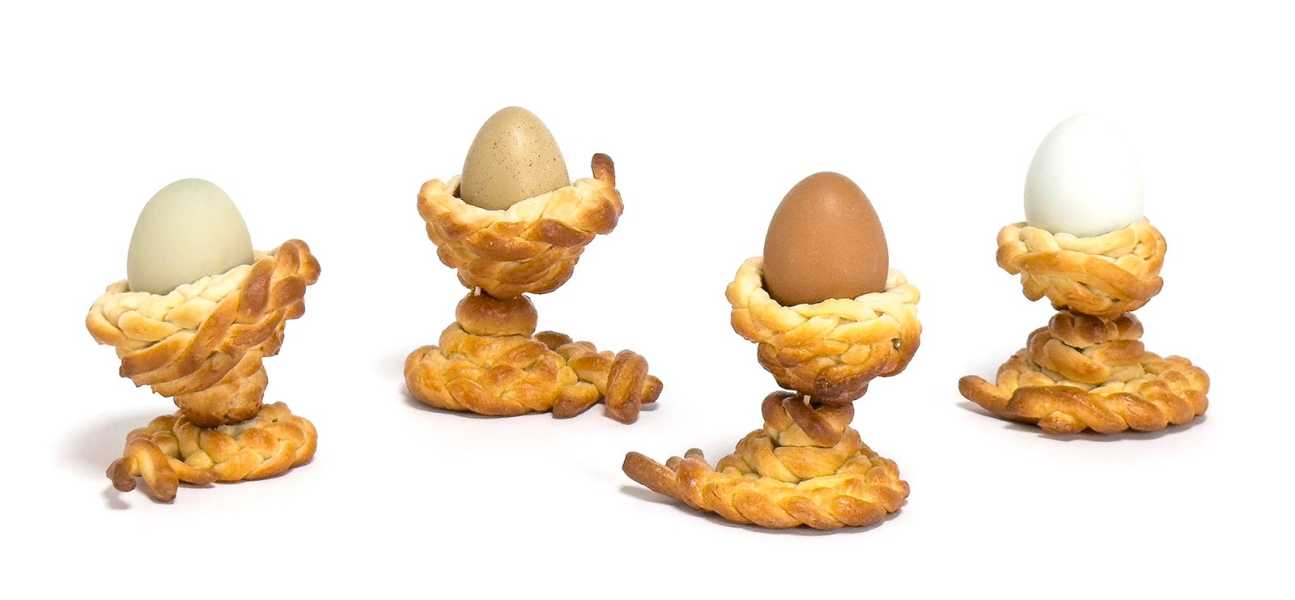
Bad Taste Bread Egg Cups.Photograph from Fredericks and Mae
A kiwi platter ($165), perfect for fruit salad; a frilly Savoy-cabbage soup tureen (various sizes, from $95), for cabbage and other kinds of soup; a banana vase ($38); an oyster-laden oyster plate ($160), set for slurping; a scooped-out-cantaloupe bowl ($95), to elevate your breakfast; earthenware baked-potato bowls ($355 for two), ready to be filled with mash; a white-on-white bowl with slender asparagus spears for legs ($50.16), astride your table like a ghostly alien. Not for the table: A fried-egg blanket ($19.19), for when you feel the urge to be wrapped in a fried egg; a mirror framed in resin-coated bread ($80); a slice-of-bread reclining cushion ($165.75); a golden baguette necklace ($125); and an egg cup made of (actual, albeit not intended to be eaten) bread ($65).
The Dream of the Perfect Sandwich, Realized
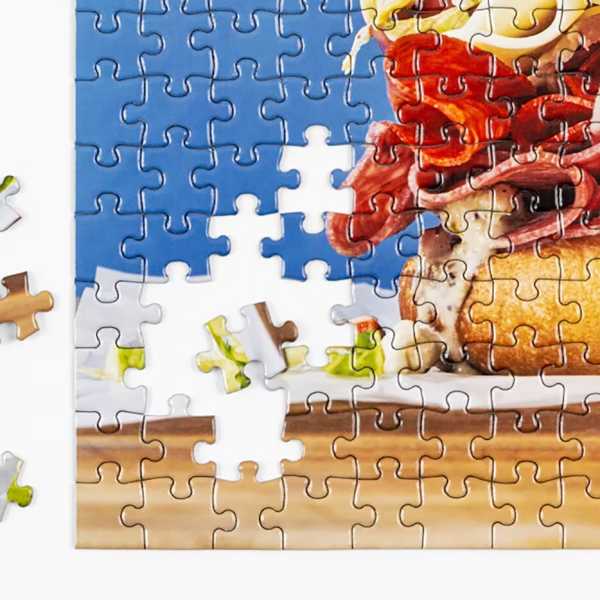
The Big Italian Sandwich Puzzle.Photograph from Union Sqare & Co.
If you have sandwich lovers in your life, nothing will ever make them happier than a truly excellent sandwich. Pulling off this gift properly requires a bit of sleuthing, assuming you don’t already know the precise details of the recipient’s dream construction. Prepare to go way beyond simplistic designations—“turkey and Swiss,” “B.L.T.,” “banh mi”—to a level of individual-preference minutiae that, if you’re not a sandwich person yourself, might seem ludicrous. Whether you plan to make the sandwich or purchase it, the actual moment of present-giving calls for a voucher or an I.O.U.—your average moment of celebratory gift exchange isn’t generally the time to spring on someone an unexpected, if delightful, mélange of meats, cheeses, and properly pickled and dressed vegetables. To prove that your money is where your loved one’s mouth is, present a detailed blueprint of your plan—the bread, the ingredients, the layering strategy, the textural relationships, the temperature relationships, and the deli or bakery of origin, if applicable. Include a durable token of how seriously you take this task in the form of a jigsaw puzzle of an enormous Italian hoagie ($17.99), one of the most lascivious sandwich lovers’ sandwiches ever immortalized. ♦
Sourse: newyorker.com






